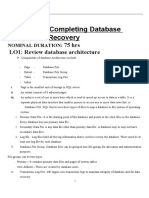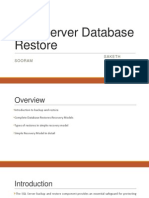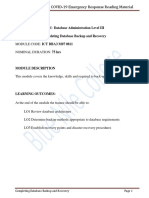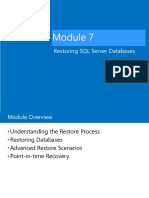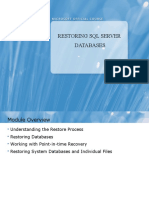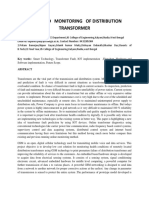0% found this document useful (0 votes)
12 views9 pagesDatabase Assignment 6
The document discusses the importance of backup and recovery in database management systems, highlighting the risks of not having a backup strategy, including data loss and financial damage. It explains different types of backups in SQL Server: full, differential, and transaction log backups, detailing their purposes and when to use each. Additionally, it outlines the steps for recovering a database to a specific point in time using transaction log backups and precautions to take before and after restoration.
Uploaded by
hhaseebkkhan345Copyright
© © All Rights Reserved
We take content rights seriously. If you suspect this is your content, claim it here.
Available Formats
Download as PDF, TXT or read online on Scribd
0% found this document useful (0 votes)
12 views9 pagesDatabase Assignment 6
The document discusses the importance of backup and recovery in database management systems, highlighting the risks of not having a backup strategy, including data loss and financial damage. It explains different types of backups in SQL Server: full, differential, and transaction log backups, detailing their purposes and when to use each. Additionally, it outlines the steps for recovering a database to a specific point in time using transaction log backups and precautions to take before and after restoration.
Uploaded by
hhaseebkkhan345Copyright
© © All Rights Reserved
We take content rights seriously. If you suspect this is your content, claim it here.
Available Formats
Download as PDF, TXT or read online on Scribd
/ 9







